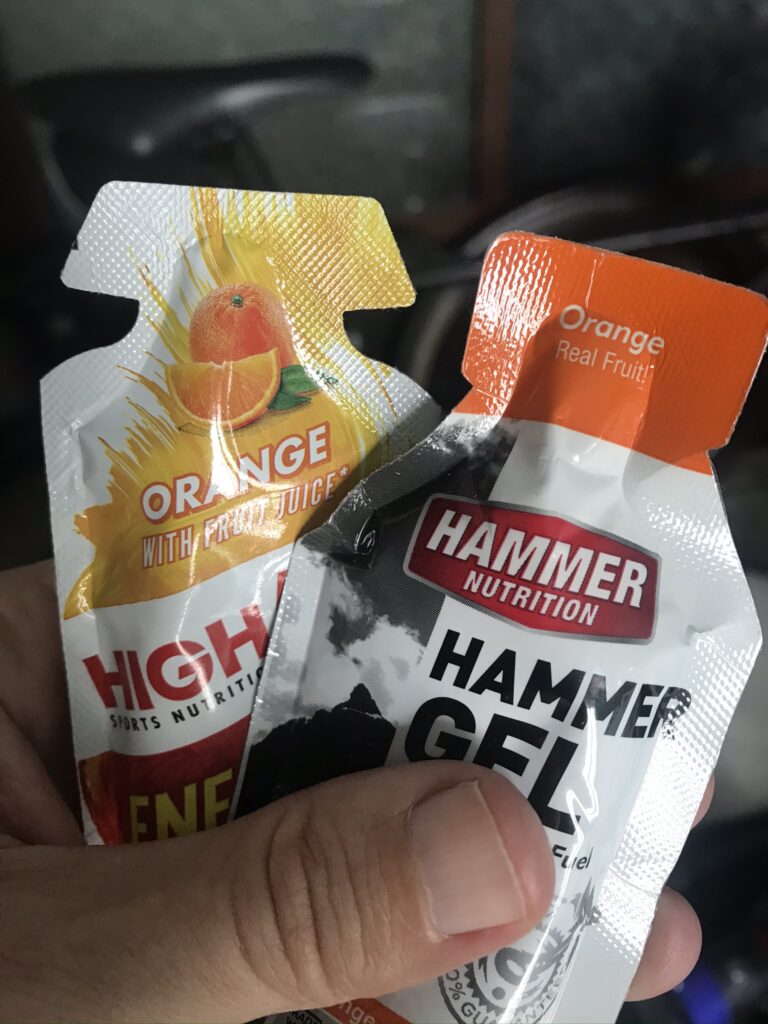Don’t try anything new on race day.
That is tip #38 but really it should be tip #1.
This is the tip that we’ve all heard probably even before we were triathletes.
And I’d like to extend it to nutrition.
It may be hard for some people to find the right nutritional mix that will give them optimal results on race day.
All the more important it is, therefore, that they test it well in advance.
Different people react differently to different foods and fuels. Some people’s stomachs will get upset easily while others could probably eat a steak on the run and not feel anything.

If I have one triathlon superpower, it may be that my stomach never really gets upset. OK, it did once (at the 2019 70.3 world champs no less), but I’d like to think that was a one-time aberrance.
Nevertheless, I do not ever use untested nutrition on race day.
Beyond just what you eat on the bike or the run, consider the following:
What you eat the night before.
Stay away from meats, oily food, and for the more sensitive, dairy. Some like carbo-loading, others don’t. Carbo-load before a training ride and learn works for you. Of course, avoid alcohol and probably caffeine. Test this before a long day of training – not before your race.
Breakfast the day of the race.
Same as the night before, stay away from heavy proteins and probably dairy. I’ve learned what I like and I just keep eating that at each race. That definitely includes coffee and quite a bit of water with an electrolyte supplement. Again, this needs to be tested at home, not on race day.
The bike nutrition.
What has worked for you as you have trained? For years, I had become extremely comfortable with Hammer Perpetuem.
But then, I ventured out to other nutrition products and found that many more worked well for me: UCAN, GU, CarboPro and many more.
I encourage you to try new things. Most brands have single-serve sachets you can buy so you don’t have to invest in a huge tub which you may not like.
Taking things a step further, you can even make your own. Check out this article on homemade endurance fuels I did with Dr. Alex Harrison here.

Also, if you can find out what drinks and foods (specifically for a full Ironman) are going to be served on the run you can test with those. Sometimes the race organizer will list this on their website, or past participants can tell you.
However, what they had last year may not necessarily be the same thing they’ll have this year, but it’s a good indication.
Finally, planning your caloric, carb, sodium and other nutrient needs should be done well in advance. We have a nutrition calculator to help you do that here. If you’d prefer it on your phone, you may download the app here.
In short, test all your nutrition before race day and reduce the chance of GI (gastrointestinal) distress. This probably something you can avoid with careful planning even if your stomach is more sensitive that most.
Related tips:
